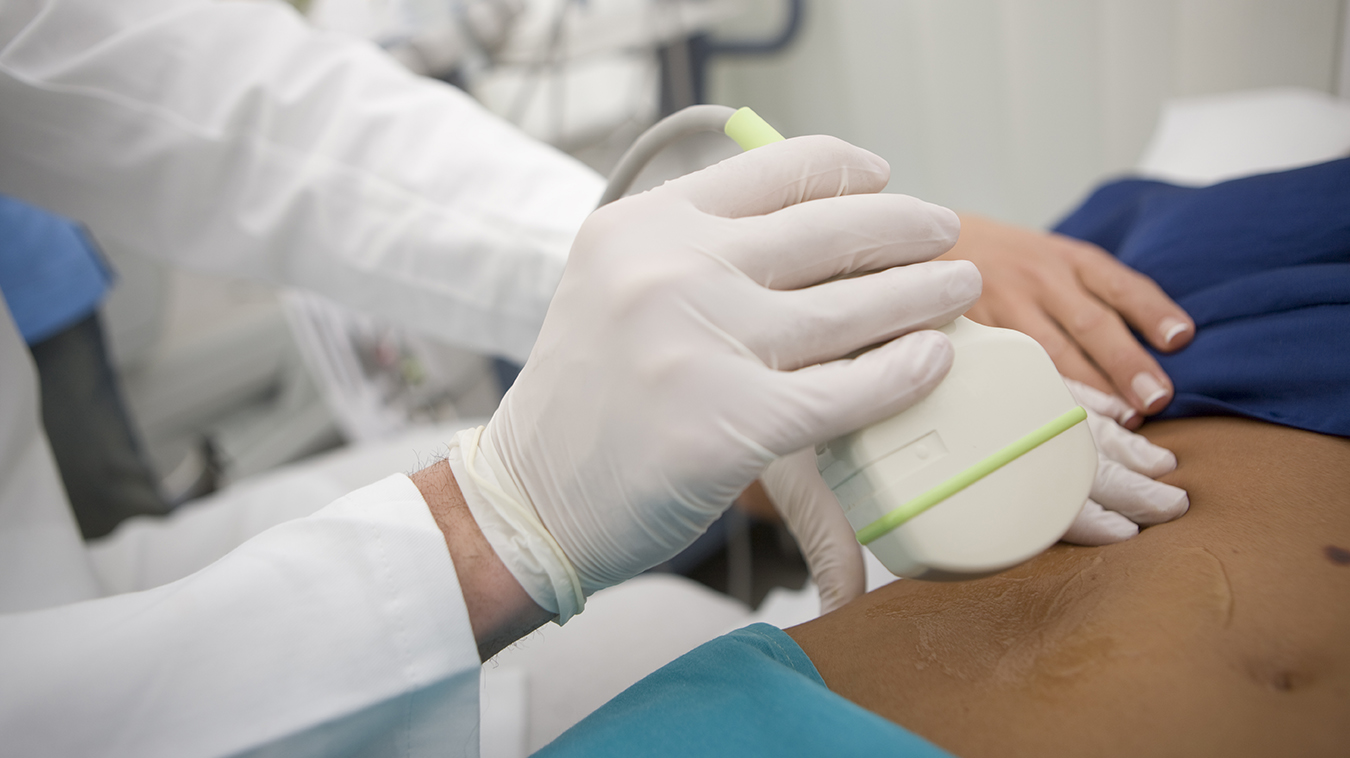TOLL FREE:
1-866-611-2665

Home USING ULTRASOUND TO DETERMINE LIVER FIBROSIS
Your liver is the second largest organ in your body. It helps process nutrients and filters harmful substances from your blood. When damage to your liver leads to liver fibrosis, it can impede the proper functioning of your liver.
Liver fibrosis results from scarring and stiffening of healthy liver tissue. This form of liver damage can stem from a variety of causes.
Liver damage can be caused by a number of factors, such as excessive alcohol use, fatty liver, or viral and autoimmune causes. Non-alcoholic fatty liver disease (NAFLD) is one of the most common types of chronic liver diseases in Canada. It occurs when excess fat is stored in the liver cells without a known cause, and can lead to liver inflammation and eventually liver fibrosis.
Please note that not all patients with a fatty liver have NAFLD. However, according to the Canadian Liver Foundation, NAFLD affects up to 20% of people in Canada. It often develops in people who are overweight or obese, or people who have a high-fat, high-sugar diet.
A type of ultrasound imaging called elastography directs painless low frequency vibrations into the liver to measure how quickly these vibrations move through it. A computer uses this information to create a visual map showing the stiffness of the liver. This exam is the same as an abdomen ultrasound with the use of elastography technology at the end of the exam.
By measuring the stiffness of your liver, elastography is an appropriate tool to look for the variety of diseases that can occur in the liver and:
Traditionally, liver fibrosis was assessed with biopsy – a needle was used to take a small sample of your liver tissue for examination under a microscope. However, this invasive technique can be associated with complications and can only sample a small portion of the liver.
With mild to moderate liver fibrosis, many people do not experience symptoms. As such, it can be challenging to diagnose chronic liver disease. Your health care practitioner might look at risk factors, such as heavy alcohol use, obesity, and diabetes, to help diagnose it, as well as results from blood tests.
Ultrasound helps health care practitioners make a diagnosis and inform care decisions. Once your doctor has identified the need for this exam, your doctor’s office may book an appointment for you, or provide you with a number to call to book your appointment. You will also be given a requisition form and preparation instructions for your exam.
For liver elastography ultrasound, you will be asked to fast and have nothing to eat or drink (except water) for six hours prior to your exam. It generally takes between 20-30 minutes to complete this exam.
Once in the exam room you may be asked to change into a gown. You will then be positioned by one of our compassionate and experienced sonographers. A warm, unscented, hypo-allergenic, water-based ultrasound gel will be applied to your abdomen, and your sonographer will move the transducer around the front and side of your abdomen and ribcage to gather images of your organs. You may be asked to hold your breath and change position to help better examine the area of concern. You may experience mild to moderate pressure while the sonographer takes the images.
Your images will be reviewed by a specialized radiologist who will compile a report that is sent to your doctor within 24 hours, sooner for urgent requests. Mayfair Diagnostics is owned and operated by over 50 radiologists who are fellowship-trained in many key areas, such as neuroradiology, body, cardiac, musculoskeletal, etc. This allows for an expert review of your imaging by the applicably trained radiologist.
Your images will be uploaded to a provincial picture archiving and communication system (PACS) – this technology provides electronic storage and convenient access to your medical images from multiple sources, such as your doctor, specialists, hospitals, and walk-in clinics.
Your doctor will review your images and the report from the radiologist and discuss next steps with you, such as a treatment plan or the need for further diagnostic imaging or lab tests to ensure an accurate diagnosis.
Our elastography services are available at our Aspen Landing, Castleridge, Coventry Hills, Crowfoot, Mahogany Village, and Market Mall locations in Calgary, and our Regina location in Saskatchewan. For more information about our clinic locations and services, please visit our clinic location pages.
REFERENCES
Canadian Liver Foundation (2022) “Fatty Liver Disease.” www.liver.ca. Accessed January 11, 2022.
Gherlan, G. S. (2015) “Liver ultrasound elastography: More than staging the disease.” World Journal of Hepatology. Accessed January 11, 2022.
Nall, R. (2022) “Liver Fibrosis.” www.healthline.com. Accessed January 11, 2022.
Radiological Society of North America (2022) “Elastography.” www.radiologyinfo.org. Accessed January 11, 2022.
Our Refresh newsletter delivers the latest medical news, expert insights, and practical tips straight to your inbox, empowering you with knowledge to enhance patient care and stay informed.
By subscribing to our newsletter you understand and accept that we may share your information with vendors or other third parties who perform services on our behalf. The personal information collected may be stored, processed, and transferred to a country or region outside of Quebec.
Please read our privacy policy for more details.